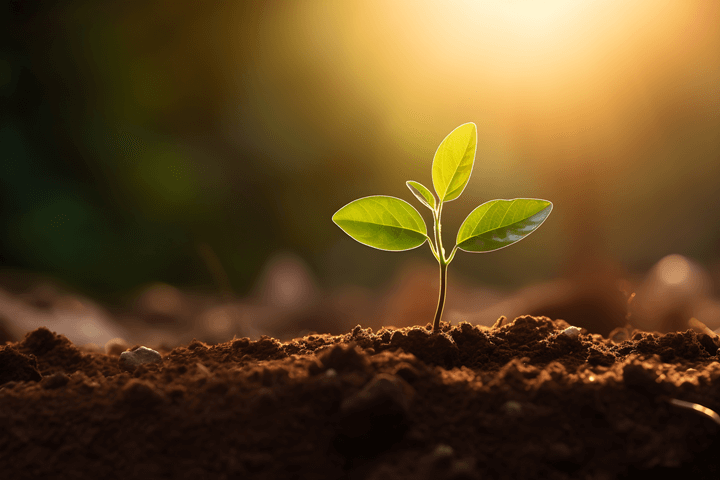Welcome to the vibrant world of Arabic, where language blossoms just like the plants around us! For non-native speakers, understanding terminology related to nature, especially plants in Arabic, is not just enriching but also essential for deeper cultural and conversational engagement. Whether you’re exploring the desert flora or discussing home gardens, knowing these terms will help your Arabic flourish. This article is your comprehensive guide to mastering essential plant in Arabic vocabulary, ensuring you can confidently describe the diverse Arabic plants you encounter.
Plants in Arabic: Essential Words
Let’s begin with some fundamental vocabulary for various Arabic plants and general terms you’ll encounter.
- (Nabat) نبات : This is the most common and overarching term for “plant” as a noun, referring to any living organism that grows in the ground or water, usually having stems, leaves, and roots.
- (Shajarah) شجرة : Tree. (Plural: أشجار – Ashjar)
- (Zahrah) زهرة : Flower. (Plural: زهور – Zuhur / أزهار – Azhar)
- (Ushbah) عشبة : Herb / Grass. (Plural: أعشاب – A’shab)
- (Fakihah) فاكهة : Fruit (also refers to fruit-bearing plants).
- (Khadrawat) خضراوات : Vegetables (often includes leafy greens and edible plants).
- (Badhrah) بذرة : Seed. (Plural: بذور – Budhur)
- (Turbah) تربة : Soil.
- (Jidhr) جذر : Root. (Plural: جذور – Judhur)
- (Waraqah) ورقة : Leaf. (Plural: أوراق – Awraq)
- (Ghusn) غصن : Branch / Twig. (Plural: أغصان – Aghsan)
- (Jidh’) جذع : Trunk (of a tree).
How to say Plant in Arabic?
The word “plant” in English can function as both a noun and a verb, and in Arabic, different words are used depending on the context:
- As a Noun (the living organism): Use نبات (Nabat).
- Example: This plant is beautiful – هذه النبتة جميلة. (Hadhihi an-nabtah jamilah.).
- Example: There are many plants in Arabic in the garden – يوجد العديد من النباتات في الحديقة. (Yujad al-`adid min an-nabatat fi al-hadiqah.).
- As a Verb (to put something in the ground):
- (Zara’a) زرع : This verb is widely used for “to plant,” especially in the context of agriculture or putting seeds in the ground.
- Example: We planted new seeds – زرعنا بذوراً جديدة. (Zara’na budhuran jadidah.).
- (Gharasa) غرس : This verb often implies planting something with roots, like a sapling or a tree. It suggests a more permanent planting.
- Example: They planted an olive tree – غرسوا شجرة زيتون. (Gharasu shajarat zaytun.).
- (Zara’a) زرع : This verb is widely used for “to plant,” especially in the context of agriculture or putting seeds in the ground.
Common Types of Plants
Expanding your vocabulary to include specific types of Arabic plants will enhance your descriptive abilities.
- Palm tree – شجرة النخيل (Shajarat An-Nakhil)
- Olive tree – شجرة الزيتون (Shajarat Az-Zaytoun)
- Cactus – صبار (Sabbar)
- Roses – ورود (Wurood)
- Ornamental plants – نباتات الزينة (Nabatat Az-Zinah)
- Wildflowers – زهور برية (Zuhur Barriyah)
Parts of Plants
To truly master plant terminology in Arabic, understanding the different parts of a plant is crucial.
| English Term | Arabic Term | Transliteration |
|---|---|---|
| Root in Arabic | جذر | Jidhr |
| Stem in Arabic | ساق | Saq |
| Leaf in Arabic | ورقة | Waraqah |
| Flower in Arabic | زهرة | Zahrah |
| Fruit in Arabic | ثمرة | Thamara |
| Seed in Arabic | بذرة | Badhrah |
| Branch in Arabic | غصن | Ghusn |
Common Expressions Related to Plants
Beyond individual words, certain phrases and expressions related to plants in Arabic are commonly used:
- Botanical garden – حديقة نباتات (Hadiqah Nabātāt).
- Houseplant – نبات منزلي (Nabat Manzili).
- Plant pot – أصيص نبات (Asis Nabat).
- While it means “factory,” it’s worth noting its relation to the verb “صنع” (sana’a – to make/produce), which can sometimes be confused with “plant” (as in industrial plant). However, in the context of botanical terms, always use “نبات – .” مصنع (Masna’).
- To plant hope (an idiomatic expression) – زرع الأمل (Zara’ al-Amal).
Mastering these essential terms and phrases related to plants in Arabic will not only expand your vocabulary but also deepen your understanding of the language and culture. Keep practicing, and watch your Arabic language skills grow just like the beautiful Arabic plants you’re now able to describe!
If you want to learn more about Arab culture, visit our blog on www.kaleela.com and don’t forget to download the Kaleela app.



